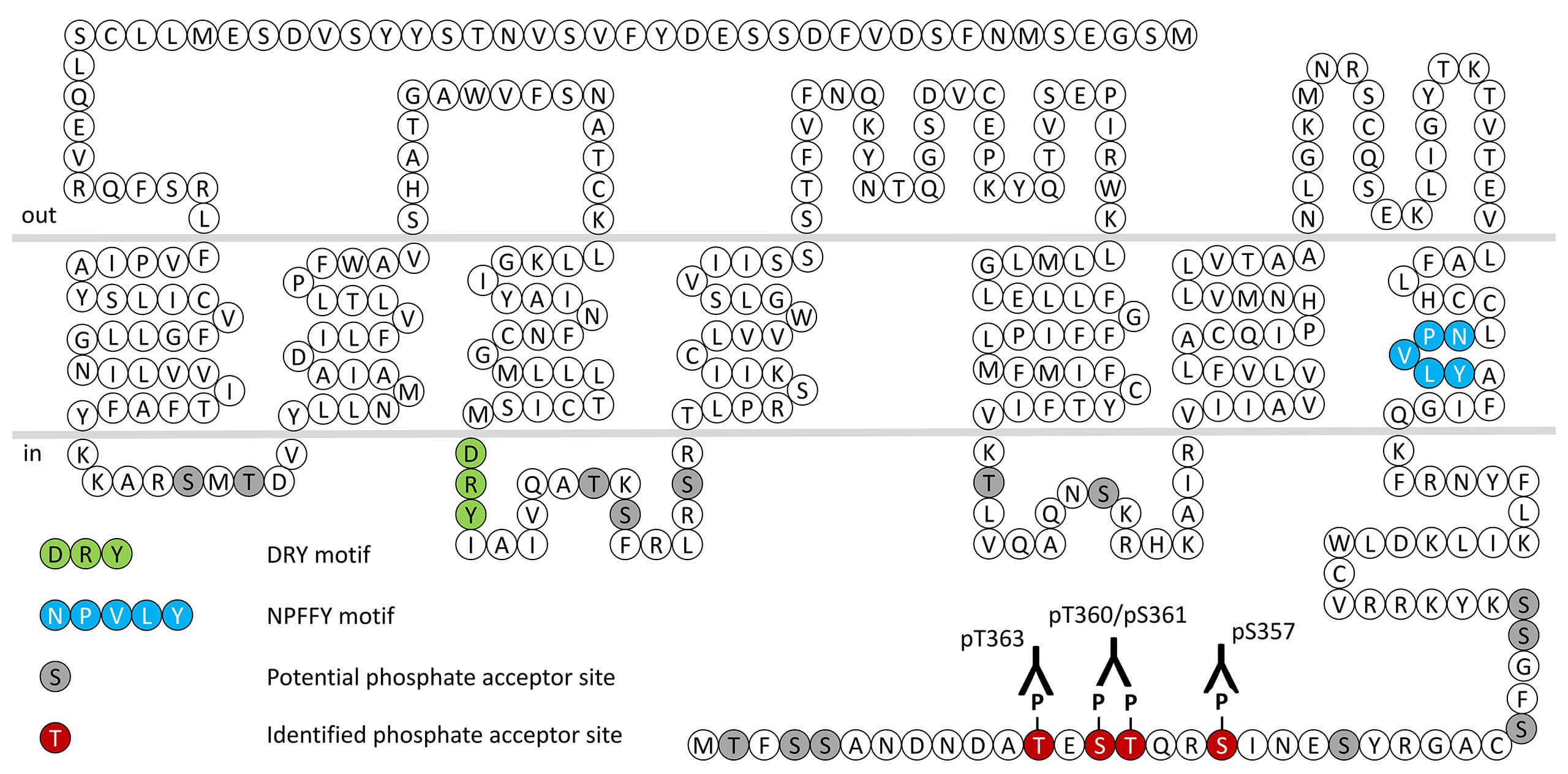No results were found for the filter!
NEW
 pS357-CCR6 (phospho-Chemokine Receptor 6 Antibody)
pS357-CCR6 (phospho-Chemokine Receptor 6 Antibody) Serine357 (S357) is a major phosphorylation site of the CCR6 receptor. The pS357-CCR6 antibody detects phosphorylation in response to high- and low-efficacy agonists and after PKC activation. S357 phosphorylation is a key regulator of...
$ 375.00 *
NEW
 pT360/pS361-CCR6 (phospho-Chemokine Receptor 6...
pT360/pS361-CCR6 (phospho-Chemokine Receptor 6... Threonine360/Serine361 (T360/S361) is a major phosphorylation site of the CCR6 receptor. The pT360/pS361-CCR6 antibody detects phosphorylation in response to high- and low-efficacy agonists and after PKC activation. T360/S361...
$ 375.00 *
NEW
 pT363-CCR6 (phospho-Chemokine Receptor 6 Antibody)
pT363-CCR6 (phospho-Chemokine Receptor 6 Antibody) Threonine363 (T363) is a major phosphorylation site of the CCR6 receptor. The pT363-CCR6 antibody detects phosphorylation in response to high- and low-efficacy agonists and after PKC activation. T363 phosphorylation is a key regulator of...
$ 375.00 *
Recently viewed


